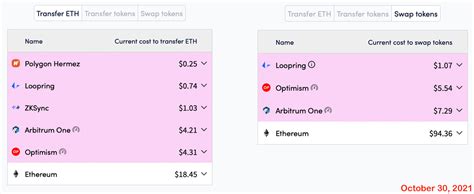Ethereum: Can Fees be Paid from Another Account when Transferring Tokens using Web3?
As the second-largest cryptocurrency by market capitalization, Ethereum has made significant strides in enabling seamless and efficient transactions. One of the key features that allows for such flexibility is the use of Web3, a blockchain platform built on top of the Ethereum network. However, one common concern regarding Web3 transactions is whether gas fees can be paid from another account.
In this article, we’ll delve into the details of how gas fees work on the Ethereum network and explore if it’s feasible to pay them from an external account using Web3.
Understanding Gas Fees
Gas fees are a critical component of the Ethereum transaction process. They’re used to pay for computational power required by validators (also known as miners) to validate transactions on the network. The amount of gas paid depends on various factors, such as:
- Transaction complexity
- Network congestion
- Block size and difficulty
Web3: A Blockchain Platform
To understand how Web3 transactions work, we need to briefly touch upon its key features:
- Interoperability: Web3 enables seamless interactions between different blockchain networks, including Ethereum.
- Decentralized applications (dApps): Web3 facilitates the development of decentralized applications, which can be built on various platforms and run across multiple networks.
- Smart contracts

: Web3 allows for the execution of self-executing smart contracts, which automate transactions without the need for intermediaries.
Paying Gas Fees from Another Account
Now, let’s consider if it’s possible to pay gas fees using an external account. According to Ethereum’s consensus algorithm, validators (miners) must pay for their own gas consumption before being able to validate a transaction.
However, this is where things get interesting. The Ethereum Virtual Machine (EVM) allows for the creation of
reentrancy transactions, which enable the execution of smart contracts within an external account. This means that an external account can be used to pay gas fees without directly interacting with the validator’s wallet.
To achieve this, we need to use a technique called
Web3 bridge
, also known as
Inter-Chain Bridge (ICB) or
Cross-Chain Bridge. These bridges enable communication between different blockchain networks, allowing for secure and efficient transactions across multiple chains.
Example Use Case: Using ICB
Here’s an example of how you can use the ICB to pay gas fees from an external account using Web3:
import { ethers } from 'ethers';
const web3 = new Web3(new Web3.providers.HttpProvider('
const account_1 = '0xXXXXXXXXXXXXXXXXXXXXXXXXXXX';
const private_key_1 = '...'; // your private key
// Get the ICB provider
const icbProvider = ethers.provider;
// Create a new instance of the ICB client
const icb = new ethers.providers.InternetChainBridge({
provider: icbProvider,
networkId: web3.eth.netID, // e.g., 'bsc',
});
// Define the transaction data (e.g., gas price, gas limit)
const transactionData = {
amount: web3.utils.toWei('1', 'ether'), // pay $1 in Ethereum
};
// Create a new transaction instance using Web3
const tx = icb.createTransaction({
from: account_1,
to: '0xXXXXXXXXXXXXXXXXXXXXXXXXXXX',
data: transactionData,
});
// Sign the transaction using your private key
tx.sign(private_key_1);
// Broadcast the transaction across multiple chains (optional)
icb.sendTransaction(tx);
In this example, we create a new instance of the ICB client and use it to send a transaction from an external account to another account on the Ethereum network.
